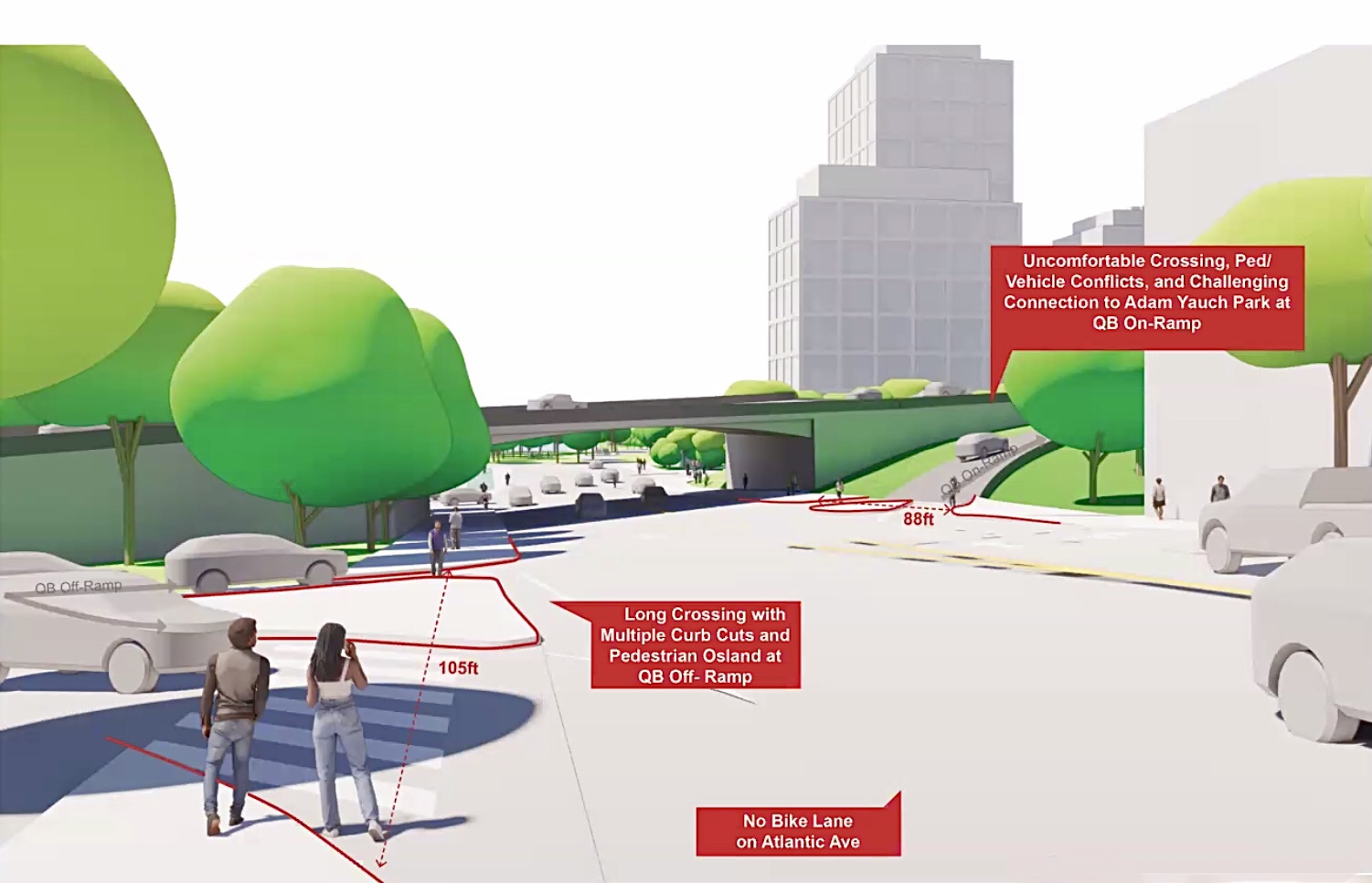DOT’s plans for BQE – Atlantic Ave. interchange infuriate Brooklyn residents, stakeholders
‘Straight out of a Robert Moses playbook’

COBBLE HILL — Brooklyn officials and local community members expressed overall disappointment — and even outrage — with the city’s proposals for a redesigned Brooklyn-Queens Expressway – Atlantic Avenue interchange, unveiled at a meeting held via Zoom on Thursday. More than 140 participants attended the meeting.
This interchange lies at the southernmost end of an upcoming massive project to rebuild a 1.5-mile stretch of the BQE from Atlantic Avenue to Sands Street, including the Triple Cantilever underpinning the Brooklyn Heights Promenade.
Three different plans were presented by officials from the NYC Department of Transportation and its design partners WXY Studio and Sam Schwartz Engineering. (See graphics comparing Concepts 1 – 3.) These proposals focus on improving pedestrian, cyclist, motorist and truck interactions at the interchange, bringing on- and off-ramps into compliance with modern federal safety standards, and reuniting Van Voorhees Park.